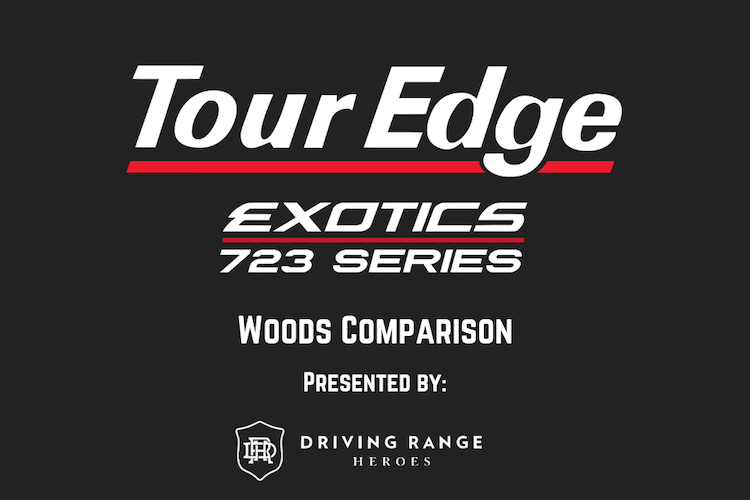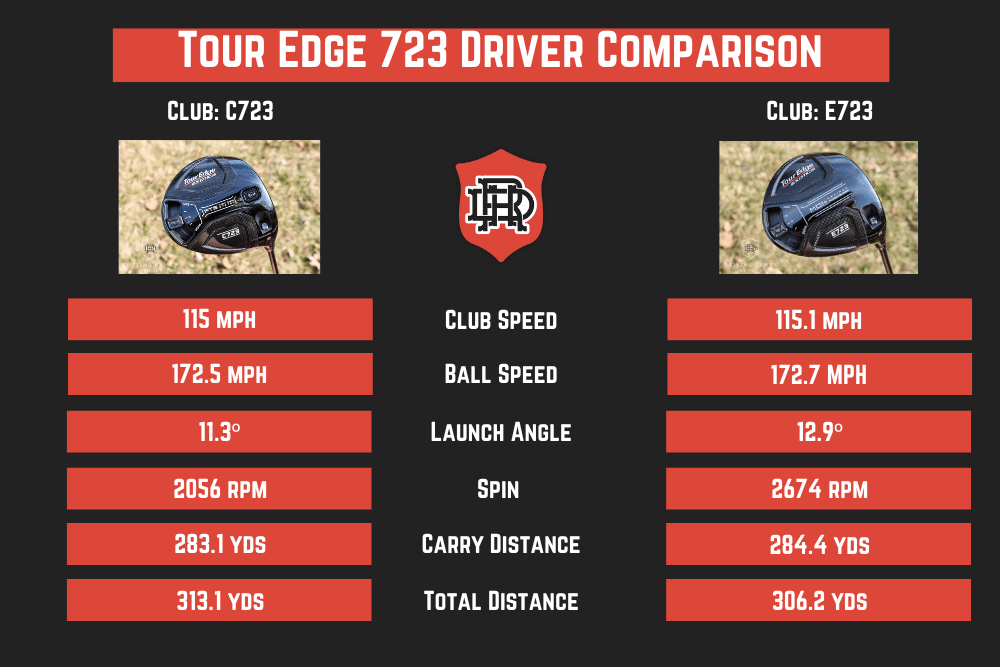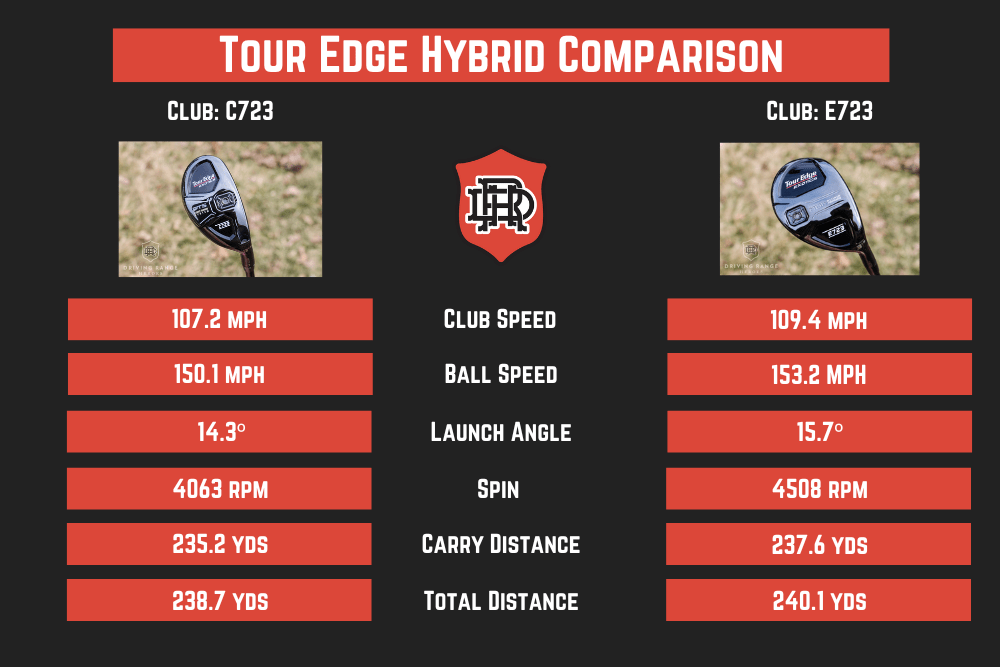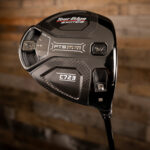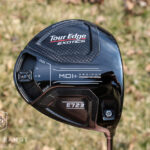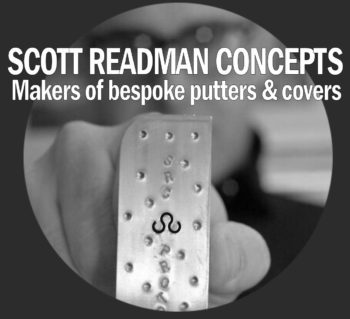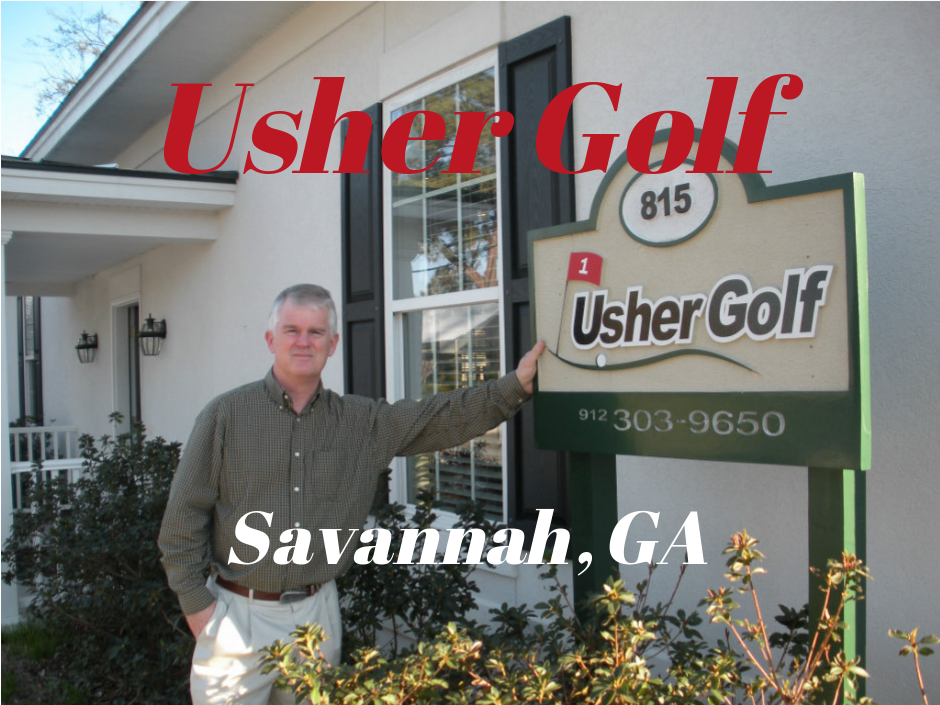Introduction
Tour Edge has released two models of metalwoods in their Exotics families for the past few seasons – the “competitive” spec C series and the “extreme” forgiveness E series. In short, the Tour Edge Exotics family offers two lines to fit the needs of a wide range of players whether a low handicap stick or a casual weekend warrior. With all of the reviews having been published on our site, I’ll take you through my own Tour Edge C723 vs E723 woods comparison.
Let me point out that this insight is based on my own data points and experiences. The way your specific swing responds to the equipment may be entirely different. It is always best to properly test and get professionally fit for your gear. To learn more about each club, please see the individual reviews linked in this post.
Tour Edge C723 vs E723: Drivers
My testing for the Tour Edge C723 vs E723 drivers was fairly close based on shot data alone. As expected, I got a little more launch and spin out of the E723, and the C723 had less spin, but more rollout. I would argue that using the same shaft to test both of them helped keep the data close. That said, the big differences I experienced between the two were the adjustability of the C723 and the “ease of use” with the E723.
I’ll admit that I struggled a bit out of the gate with the C723 driver. The math didn’t add up to me at all! So Tour Edge generously offered to let me come in one afternoon and work the bugs out with their fitter. With a little time on the Trackman, swapping some different weights into the head, and a little tweaking of the sliding weight was all I needed. I was then hitting powerful ropes with a consistent launch angle allowing for solid carry ultimately giving me great distance. Thanks to all of the adjustability, the power and control fell into place once I got everything dialed in.
What really caught my attention with the E723 driver was how easy it was to hit. The sweet spot is generous thanks to the Diamond Face VFT technology and the high MOI provides a strong balance for consistent accuracy. If I had to play this driver everyday, I could without any problems. I’d say the big difference is that I simply got more power and total distance once I had the C723 driver dialed in. For a player just seeking more control and consistency off the tee, power may be less important for them and the E723 is perfect.
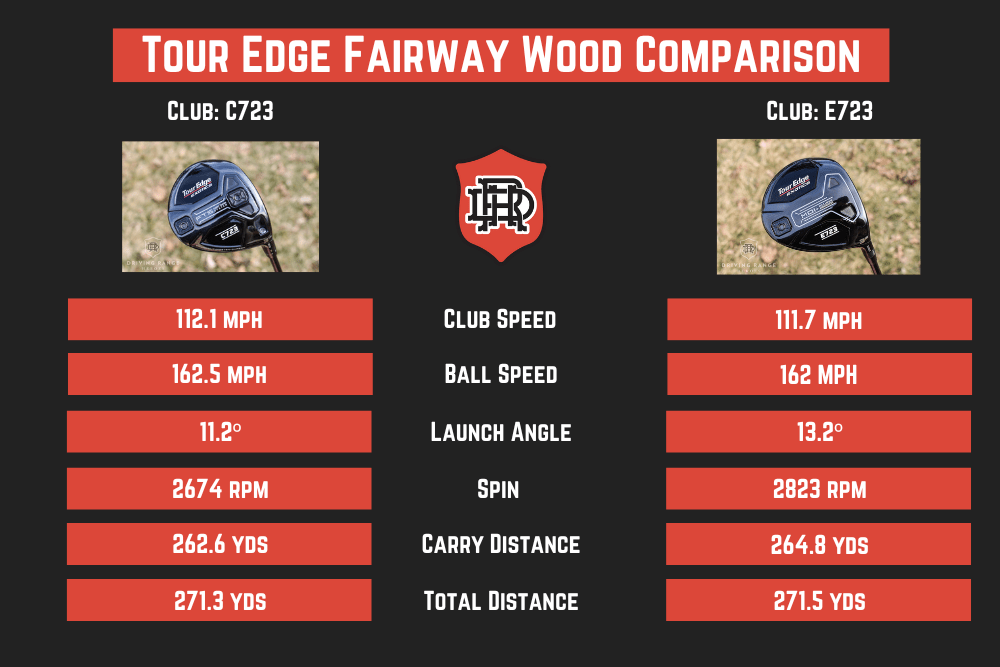
Tour Edge C723 vs E723: Fairway Woods
Though the Tour Edge C723 fairway wood doesn’t feature a sliding perimeter weight like the driver, there are still two swappable sole weights to move the CG to the front or back. With the weight forward, the C723 had a super low spinning piercing flight, while the rear position added some spin and became a little easier to launch. As noted in the data above, the spin still stayed pretty low and my launch angle was fine. The biggest difference is I didn’t have to fight to get the ball off the ground and my control was much better with the the back CG placement.
With only a rear weight placement, the E723 fairway wood is designed for higher spin and launch. That said, I didn’t feel it was by any means a super high launch or spinny fairway wood. Both factors contribute to easy liftoff and plenty of carry. Let me be clear, the E723 definitely does not promote a floaty flight. It’s still going to produce a pretty powerful shot, but the forgiveness is much higher. Frankly, the E723 is just easier to hit and I think players that like to work the ball shouldn’t have a problem with it. I also find that I can consistently hit it with better accuracy and farther than the C723 fairway wood.
I think the big differentiator between these two fairway woods will come down to look and feel. The small, compact profile of the C723 is really nice, no question. The E723 has a larger profile, but also looks great. It’s a personal preference thing at that point. For feel, the C723 feels a little more solid, and the E723 has more stability. Both are very precise with excellent response.
Tour Edge C723 vs E723: Hybrids
In the big Tour Edge C723 vs E723 discussion, the hybrids follow a similar path as the fairway woods. The C723 hybrid has a super compact profile and has fairly low spin. I would say if you’re looking for extreme forgiveness in a hybrid, the C723 does not fit that bill. It has plenty of distance, but it’s on you to make sure you’re putting a good swing on it and hitting it pure. The C723 hybrid’s claim to fame is its workability and feel. I like it because I can hit shots high or low, left or right as needed fairly easily. There really is a ton of shot versatility in this hybrid. I’d say it’s about as close to an actual iron replacement as a hybrid gets these days.
While the C723 hybrid is focused on workability and feel for better ball strikers, the E723 hybrid is all about power and forgiveness. Yes, a good player will still be able to work the ball, but the built-in shot is a straight and long bomb. The high MOI design makes it easy to keep the ball on a straight path while the low and deep CG gets the ball up in the air and carrying. And let me tell you, it’s LONG. It certainly falls into the “mini fairway wood” category when it comes to hybrids, but it’s an absolute monster if that’s what you’re looking for.
Final Thoughts – Tour Edge C723 vs E723 Woods Comparison
This comparison of the Tour Edge C723 vs E723 woods really does just scratch the surface. It’s a high-level glance at how they all A-B tested for me so I really do encourage you to read the individual reviews to learn more about the integrated technologies and an in-depth look at my testing experience with each club. The fact is that the Exotics 723 family is a great lineup of metalwoods offering something for a wide range of players. Many players will even find they’re best suited for a mix of C and E series clubs! For instance, I’ve consistently played an E series fairway wood and a C series hybrid for the past two seasons. Of course, as always, I strongly encourage you to do your own testing, and hopefully get fit for the best setup for your game.

